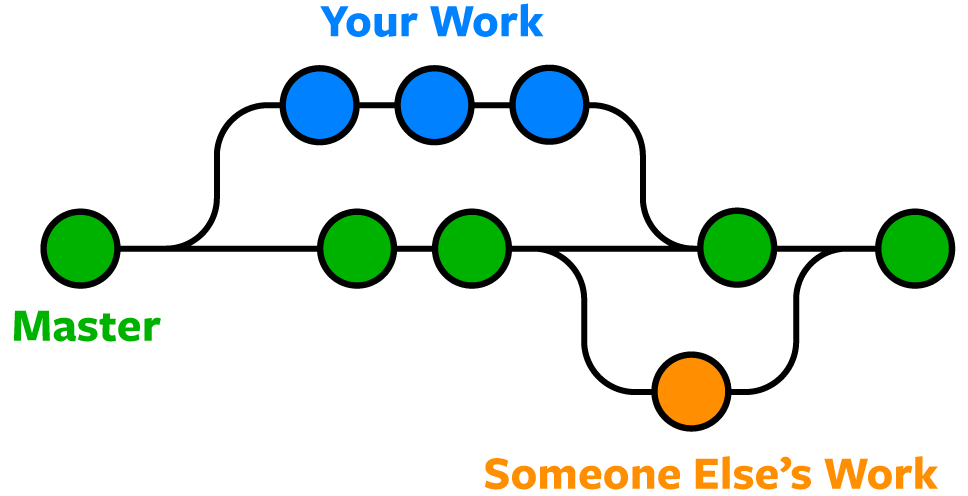Software Branch
A Software Branch is a source code set that is a descendant of another parent source code set.
- AKA: Branching (Version Control).
- Context:
- It can (typically) reside in a Software Repo.
- It can range from being a Parent Software Branch to being a Child Software Branch.
- It can (typically) be managed by Software Branch Management.
- ...
- Example(s):
- a Git Branch.
refs/heads/REL1_39[1] withinmediwiki/core.- ...
- See: Fork (Software Development), Version Control, Software Configuration Management, Source Code, Repository (Version Control), Merge (Revision Control), Code Branching Strategy.
References
2022
- (Wikipedia, 2022) ⇒ https://en.wikipedia.org/wiki/Branching_(version_control) Retrieved:2022-11-4.
- Branching, in version control and software configuration management, is the duplication of an object under version control (such as a source code file or a directory tree). Each object can thereafter be modified separately and in parallel so that the objects become different. In this context the objects are called branches. The users of the version control system can branch any branch.
Branches are also known as trees, streams or codelines. The originating branch is sometimes called the parent branch, the upstream branch (or simply upstream, especially if the branches are maintained by different organizations or individuals), or the backing stream.
Child branches are branches that have a parent; a branch without a parent is referred to as the trunk or the mainline. The trunk is also sometimes loosely referred to as HEAD, but properly head refers not to a branch, but to the most recent commit on a given branch, and both the trunk and each named branch has its own head. The trunk is usually meant to be the base of a project on which development progresses. If developers are working exclusively on the trunk, it always contains the latest cutting-edge version of the project, but therefore may also be the most unstable version. Another approach is to split a branch off the trunk, implement changes in that branch and merge the changes back into the trunk when the branch has proven to be stable and working. Depending on development mode and commit policy the trunk may contain the most stable or the least stable or something-in-between version. Other terms for trunk include baseline, mainline, and master, though in some cases these are used with similar but distinct senses – see . Often main developer work takes place in the trunk and stable versions are branched, and occasional bug-fixes are merged from branches to the trunk. When development of future versions is done in non-trunk branches, it is usually done for projects that do not change often, or where a change is expected to take a long time to develop until it will be ready for incorporating in the trunk.
In some distributed revision control systems, such as Darcs, there is no distinction made between repositories and branches; in these systems, fetching a copy of a repository is equivalent to branching.
Branching also generally implies the ability to later merge or integrate changes back onto the parent branch. Often the changes are merged back to the trunk, even if this is not the parent branch. A branch not intended to be merged (e.g. because it has been relicensed under an incompatible license by a third party, or it attempts to serve a different purpose) is usually called a fork.
- Branching, in version control and software configuration management, is the duplication of an object under version control (such as a source code file or a directory tree). Each object can thereafter be modified separately and in parallel so that the objects become different. In this context the objects are called branches. The users of the version control system can branch any branch.
2021
- https://www.nobledesktop.com/learn/git/git-branches
- QUOTE: Git lets you branch out from the original code base. This lets you more easily work with other developers, and gives you a lot of flexibility in your workflow.

- QUOTE: Git lets you branch out from the original code base. This lets you more easily work with other developers, and gives you a lot of flexibility in your workflow.